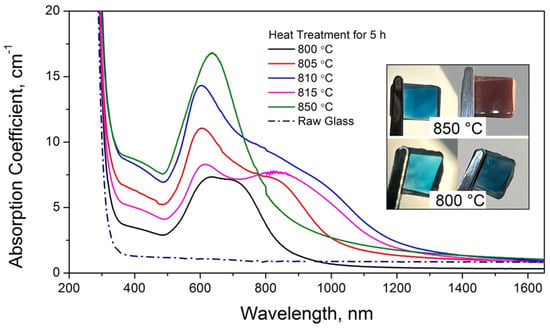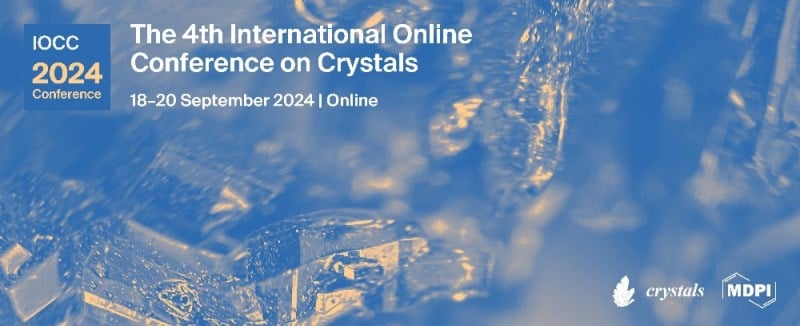-
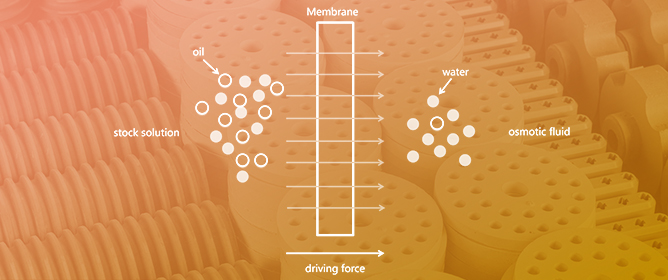 Mussel-Inspired Construction of Silica-Decorated Ceramic Membranes for Oil–Water Separation
Mussel-Inspired Construction of Silica-Decorated Ceramic Membranes for Oil–Water Separation -
 Temperature-Dependent Elastic Properties of B4C from First-Principles Calculations and Phonon Modeling
Temperature-Dependent Elastic Properties of B4C from First-Principles Calculations and Phonon Modeling -
 Glass Composition for Coating and Bonding of Polycrystalline Spinel Ceramic Substrates
Glass Composition for Coating and Bonding of Polycrystalline Spinel Ceramic Substrates -
 High-Performance Ceramics in Musculoskeletal Surgery: Current Use and Future Perspectives
High-Performance Ceramics in Musculoskeletal Surgery: Current Use and Future Perspectives
Journal Description
Ceramics
Ceramics
is an international, peer-reviewed, open access journal of ceramics science and engineering, published quarterly online by MDPI.
- Open Access— free for readers, with article processing charges (APC) paid by authors or their institutions.
- High Visibility: indexed within Scopus, ESCI (Web of Science), and other databases.
- Journal Rank: CiteScore - Q2 (Materials Science (miscellaneous))
- Rapid Publication: manuscripts are peer-reviewed and a first decision is provided to authors approximately 19.7 days after submission; acceptance to publication is undertaken in 3.9 days (median values for papers published in this journal in the second half of 2023).
- Recognition of Reviewers: reviewers who provide timely, thorough peer-review reports receive vouchers entitling them to a discount on the APC of their next publication in any MDPI journal, in appreciation of the work done.
Impact Factor:
2.8 (2022);
5-Year Impact Factor:
2.1 (2022)
Latest Articles
Ultra-Broadband Plasmon Resonance in Gold Nanoparticles Precipitated in ZnO-Al2O3-SiO2 Glass
Ceramics 2024, 7(2), 562-578; https://0-doi-org.brum.beds.ac.uk/10.3390/ceramics7020037 (registering DOI) - 25 Apr 2024
Abstract
Optical materials with a tunable localized surface plasmon resonance (LSPR) are of great interest for applications in photonics and optoelectronics. In the present study, we explored the potential of generating an LSPR band with an ultra-broad range of over 1000 nm in gold
[...] Read more.
Optical materials with a tunable localized surface plasmon resonance (LSPR) are of great interest for applications in photonics and optoelectronics. In the present study, we explored the potential of generating an LSPR band with an ultra-broad range of over 1000 nm in gold nanoparticles (NPs), precipitated through a thermal treatment in ZnO-Al2O3-SiO2 glass. Using optical absorption spectroscopy, we demonstrated that the LSPR band’s position and shape can be finely controlled by varying the thermal treatment route. Comprehensive methods including Raman spectroscopy, X-ray diffraction, and high-resolution transmission electron microscopy were used to study the glass structure, while computational approaches were used for the theoretical description of the absorption spectra. The obtained results allowed us to suggest a scenario responsible for an abnormal LSPR band broadening that includes a possible interparticle plasmonic coupling effect taking place during the liquid–liquid phase separation of the heat-treated glass. The formation of gold NPs with an ultra-broad LSPR band in glasses holds promise for sensitizing rare earth ion luminescence for new photonics devices.
Full article
(This article belongs to the Special Issue Innovative Manufacturing Processes of Silicate Materials)
►
Show Figures
Open AccessArticle
Study of the Surface-Layer Softening Effects in xLi2ZrO3–(1−x)Li4SiO4 Ceramics under Irradiation with He2+ Ions
by
Dmitriy I. Shlimas, Daryn B. Borgekov, Kayrat K. Kadyrzhanov, Artem L. Kozlovskiy and Maxim V. Zdorovets
Ceramics 2024, 7(2), 547-561; https://0-doi-org.brum.beds.ac.uk/10.3390/ceramics7020036 - 16 Apr 2024
Abstract
►▼
Show Figures
The study investigates alterations in the mechanical and thermophysical properties of ceramics composed of xLi2ZrO3–(1−x)Li4SiO4 as radiation damage accumulates, mainly linked to helium agglomeration in the surface layer. This research is motivated by the potential to
[...] Read more.
The study investigates alterations in the mechanical and thermophysical properties of ceramics composed of xLi2ZrO3–(1−x)Li4SiO4 as radiation damage accumulates, mainly linked to helium agglomeration in the surface layer. This research is motivated by the potential to develop lithium-containing ceramics characterized by exceptional strength properties and a resistance to the accumulation of radiation damage and ensuing deformation distortions in the near-surface layer. The study of the radiation damage accumulation processes in the near-surface layer was conducted through intense irradiation of ceramics using He2+ ions at a temperature of 700 °C, simulating conditions closely resembling operation conditions. Following this, a correlation between the accumulation of structural modifications (value of atomic displacements) and variations in strength and thermophysical characteristics was established. During the research, it was observed that two-component ceramics exhibit significantly greater resistance to external influences and damage accumulation related to radiation exposure compared to their single-component counterparts. Furthermore, the composition that provides the highest resistance to softening in two-component ceramics is an equal ratio of the components of 0.5Li2ZrO3–0.5Li4SiO4 ceramics.
Full article
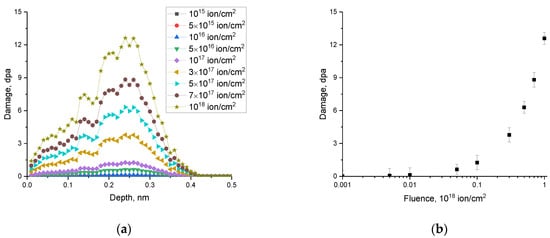
Figure 1
Open AccessArticle
Effect of Thermal Cycling or Simulated Gastric Acid on the Surface Characteristics of Dental Ceramic Materials
by
Panagiotis Pandoleon, Katia Sarafidou, Georgia K. Pouroutzidou, Anna Theocharidou, George A. Zachariadis and Eleana Kontonasaki
Ceramics 2024, 7(2), 530-546; https://0-doi-org.brum.beds.ac.uk/10.3390/ceramics7020035 - 15 Apr 2024
Abstract
►▼
Show Figures
(1) Background: The presence of various dental ceramic materials with different chemical compositions complicates clinicians’ decision making, especially in cases with a highly acidic environment appearing in patients suffering from gastroesophageal reflux disease or other eating disorders. Thermal alterations in the oral cavity
[...] Read more.
(1) Background: The presence of various dental ceramic materials with different chemical compositions complicates clinicians’ decision making, especially in cases with a highly acidic environment appearing in patients suffering from gastroesophageal reflux disease or other eating disorders. Thermal alterations in the oral cavity can also affect surface structure and roughness, resulting in variations in both degradation mechanisms and/or bacteria adhesion. The aim of the present in vitro study was to evaluate the effect of thermal cycling and exposure to simulated gastric acid on the surface roughness of different ceramics; (2) Methods: Five groups of different ceramics were utilized, and twenty specimens were fabricated for each group. Specimens were either thermocycled for 10,000 cycles in distilled water or immersed in simulated gastric acid for 91 h. The evaluation of surface roughness was performed with optical profilometry, while scanning electron microscopy, X-ray diffraction analysis and inductively coupled plasma atomic emission spectroscopy were also performed; (4) Conclusions: Based on the combination of the surface roughness profile and structural integrity, zirconia specimens presented the smallest changes after immersion in simulated gastric acid followed by lithium disilicate materials. Zirconia-reinforced lithium silicate ceramic presented the most notable changes in microstructure and roughness after both treatments.
Full article

Figure 1
Open AccessArticle
Effect of B2O3 and Basic Oxides on Network Structure and Chemical Stability of Borosilicate Glass
by
Ming Lian, Tian Wang and Chong Wei
Ceramics 2024, 7(2), 516-529; https://0-doi-org.brum.beds.ac.uk/10.3390/ceramics7020034 - 15 Apr 2024
Abstract
Glass properties play crucial roles in ensuring the safety and reliability of electronic packaging. However, challenges, such as thermal expansion and resistance to acid corrosion, pose long-term service difficulties. This study investigated the impact of the microstructure on acid resistance by adjusting the
[...] Read more.
Glass properties play crucial roles in ensuring the safety and reliability of electronic packaging. However, challenges, such as thermal expansion and resistance to acid corrosion, pose long-term service difficulties. This study investigated the impact of the microstructure on acid resistance by adjusting the glass composition. A glass material with excellent acid resistance was obtained by achieving a similar coefficient of thermal expansion to tantalum; it exhibited a weight loss rate of less than 0.03% when submerged in 38% sulfuric acid at 85 °C for 200 h. Theoretically, this glass can be used to seal wet Ta electrolytic capacitors. Differential scanning calorimetry (DSC) was used to analyze the glass transition temperature and thermal stability of borosilicate glasses. X-ray diffractometry (XRD), scanning electron microscopy (SEM), and Raman spectroscopy were used to study the microstructure of the amorphous phase of the borosilicate glass, which revealed a close relationship between the degree of network phase separation in the borosilicate glass and the degree of polymerization (isomorphic polyhedron value, IP) of the glass matrix. The IP value decreased from 3.82 to 1.98 with an increasing degree of phase separation. Boron transitions from [BO4] to [BO3] within the glass network structure with increasing boron oxide content, which diminishes the availability of free oxygen provided by alkaline oxide, resulting in a lower acid resistance. Notably, the glass exhibited optimal acid resistance at boron trioxide and mixed alkaline oxide contents of 15% and 6%, respectively. Raman experiments revealed how the distributions of various bridging oxygen atoms (Qn) affect the structural phase separation of the glass network. Additionally, Raman spectroscopy revealed the depolymerization of Q4 into Q3, thereby promoting high-temperature phase separation and highlighting the unique advantages of Raman spectroscopy for phase recognition.
Full article
(This article belongs to the Special Issue Advances in Ceramics, 2nd Edition)
►▼
Show Figures
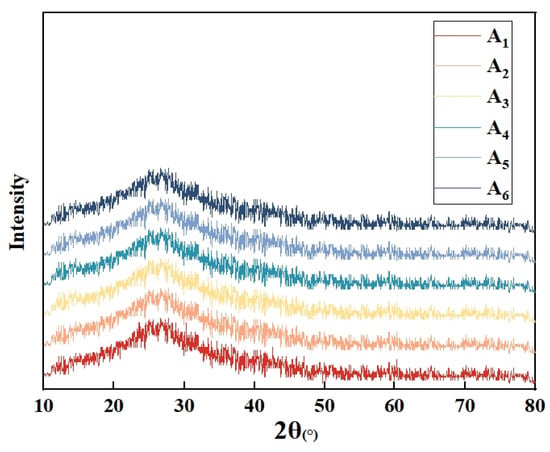
Figure 1
Open AccessArticle
Experiments Using Different Types of Waste to Manufacture Ceramic Materials: Examples on a Laboratory Scale
by
Manuel M. Jordán Vidal
Ceramics 2024, 7(2), 504-515; https://0-doi-org.brum.beds.ac.uk/10.3390/ceramics7020033 - 04 Apr 2024
Abstract
►▼
Show Figures
Reusing waste as raw materials to produce other materials can entail a decrease in production costs and in the abusive use of natural resources. Furthermore, it can even improve the properties of the end product or material. In this sense, a review of
[...] Read more.
Reusing waste as raw materials to produce other materials can entail a decrease in production costs and in the abusive use of natural resources. Furthermore, it can even improve the properties of the end product or material. In this sense, a review of the most relevant literature published in recent decades shows that numerous solutions have been proposed or implemented, such as its use to produce construction materials, catalysts, pigments, pozzolana, refractory materials, glass-ceramic products, etc. Our research group has verified the viability of using different types of waste as secondary raw materials to obtain several types of ceramic, glassy and glassceramic materials, as well as frits. This article highlights several types of industrial waste that have both non-toxic (Li, Ca and Mn) and highly toxic (Cr VI) differentiating elements that can be used in sintering and vitrification industrial processes to immobilise them or render them inert. We studied the compositions and characterised the various materials obtained, conducting toxicity and leaching tests on waste/materials designed with high amounts of chromium. A suggestion for future lines of research has been proposed.
Full article
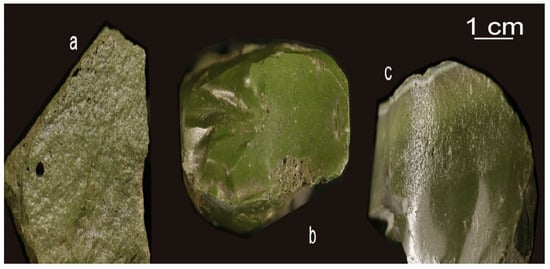
Figure 1
Open AccessArticle
The Origin of the Low-Temperature Minimum of Electrical Resistivity in Strontium Ferromolybdate Ceramics
by
Gunnar Suchaneck, Evgenii Artiukh and Gerald Gerlach
Ceramics 2024, 7(2), 491-503; https://0-doi-org.brum.beds.ac.uk/10.3390/ceramics7020032 - 01 Apr 2024
Abstract
In this work, we analyze the electrical behavior of strontium ferromolybdate below room temperature. We demonstrate that in SFMO ceramics, SFMO thin films deposited by pulsed laser deposition including (100) and (111) textured thin films, as well as in nonstoichiometric SFMO ceramics, an
[...] Read more.
In this work, we analyze the electrical behavior of strontium ferromolybdate below room temperature. We demonstrate that in SFMO ceramics, SFMO thin films deposited by pulsed laser deposition including (100) and (111) textured thin films, as well as in nonstoichiometric SFMO ceramics, an intergrain tunneling mechanism of charge carrier conduction leads to a decrease in resistivity with increasing temperature in the low-temperature region. This intergrain tunneling can be attributed to fluctuation-induced tunneling. On the other hand, bulk metallic resistivity of the grains, which increases with temperature, becomes dominant at higher temperatures and magnetic fluxes. The interplay of these conduction mechanisms leads to a resistivity minimum, i.e., a resistivity upturn below the temperature of minimum resistivity. Several mechanisms have been discussed in the literature to describe the low-temperature upturn in resistivity. Based on available literature data, we propose a revised model describing the appearance of a low-temperature resistivity minimum in SFMO ceramics by an interplay of fluctuation-induced tunneling and metallic conductivity. Additionally, we obtained that in the region of metallic conductivity at higher temperatures and magnetic fluxes, the pre-factor Rm of the temperature-dependent term of metallic conductivity written as a power law decreases exponentially with the temperature exponent m of this power law. Here, the value of m is determined by the charge scattering mechanism.
Full article
(This article belongs to the Special Issue Advances in Electronic Ceramics)
►▼
Show Figures
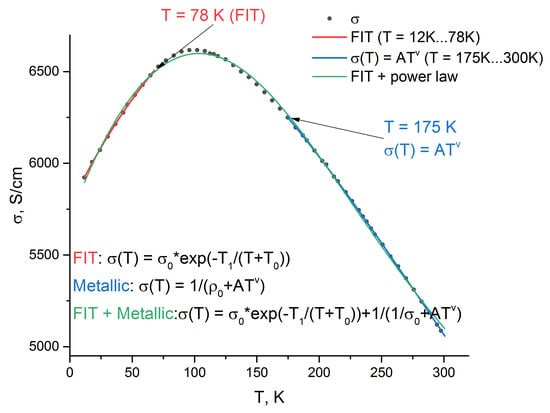
Graphical abstract
Open AccessArticle
Sonochemical Synthesis of Indium Nitride Nanoparticles and Photocatalytic Composites with Titania
by
Aikaterina Paraskevopoulou, Pavlos Pandis, Christos Argirusis and Georgia Sourkouni
Ceramics 2024, 7(2), 478-490; https://0-doi-org.brum.beds.ac.uk/10.3390/ceramics7020031 - 27 Mar 2024
Abstract
Indium nitride is an excellent semiconductor that belongs to the group of III nitride materials. Due to its unique properties, it is applied to various optoelectronic applications. However, its low thermal stability makes it difficult to synthesize. The present study introduces the synthesis
[...] Read more.
Indium nitride is an excellent semiconductor that belongs to the group of III nitride materials. Due to its unique properties, it is applied to various optoelectronic applications. However, its low thermal stability makes it difficult to synthesize. The present study introduces the synthesis of indium nitride nanoparticles, using ultrasound power (sonochemistry). The sonochemical method provides a low-cost and rapid technique for nanomaterial synthesis. InN nanoparticles were produced in only 3 h through the sonochemical reaction of InCl3 and LiN3. Xylene was used as a reaction solvent. X-ray powder diffraction (XRD) as well as high-resolution transmission electron microscopy (HRTEM) were adopted for the characterization of the obtained powder. According to our results, ultrasound contributed to the synthesis of InN nanocrystals in a cubic and a hexagonal phase. The obtained InN nanoparticles were further used to decorate titanium dioxide (TiO2) by means of ultrasound. The contribution of InN nanoparticles on the processes of photocatalysis was investigated through the degradation of methylene blue (MB), a typical organic substance acting in place of an environment pollutant. According to the obtained results, InN nanoparticles improved the photocatalytic activity of TiO2 by 41.8% compared with commercial micrometric titania.
Full article
(This article belongs to the Special Issue Advances in Ceramics, 2nd Edition)
►▼
Show Figures
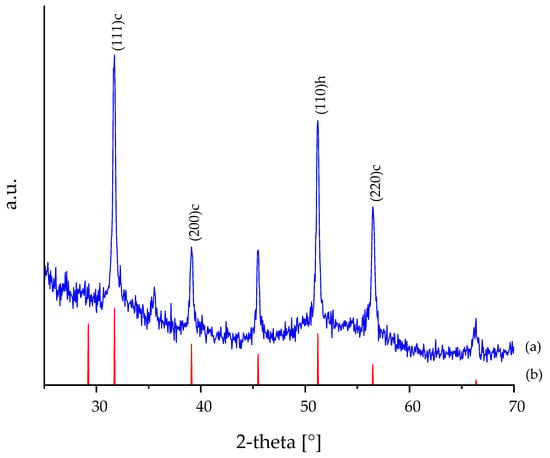
Figure 1
Open AccessArticle
Zero-Temperature Coefficient of Resonant Frequency in [(Mg0.6Zn0.4)0.95Co0.05]1.02TiO3.02-Ca0.6(La0.9Y0.1)0.2667TiO3 Ultra-Low-Loss Composite Dielectrics
by
Yuan-Bin Chen and Jie Peng
Ceramics 2024, 7(2), 466-477; https://0-doi-org.brum.beds.ac.uk/10.3390/ceramics7020030 - 26 Mar 2024
Abstract
Investigating the microwave dielectric properties of ceramics prepared through the conventional solid-state route, such as x[(Mg0.6Zn0.4)0.95Co0.05]1.02TiO3.02-(1−x)Ca0.6(La0.9Y0.1)0.2667TiO3, reveals notable characteristics. [(Mg0.6
[...] Read more.
Investigating the microwave dielectric properties of ceramics prepared through the conventional solid-state route, such as x[(Mg0.6Zn0.4)0.95Co0.05]1.02TiO3.02-(1−x)Ca0.6(La0.9Y0.1)0.2667TiO3, reveals notable characteristics. [(Mg0.6Zn0.4)0.95Co0.05]1.02TiO3.02 shows a permittivity (εr) of approximately 20, a high quality factor (Q × f) ranging between 250,000 and 560,000 GHz, and a temperature coefficient of resonant frequency (τf) of approximately −65 ppm/°C. To enhance the temperature stability, Ca0.6(La0.9Y0.1)0.2667TiO3 featuring a τf value of +374 ppm/°C was incorporated into the [(Mg0.6Zn0.4)0.95Co0.05]1.02TiO3.02 composition. τf demonstrated an increase with rising Ca0.6(La0.9Y0.1)0.2667TiO3 content, reaching zero at x = 0.95. A ceramic composition of 0.95[(Mg0.6Zn0.4)0.95Co0.05]1.02TiO3.02-0.05Ca0.6(La0.9Y0.1)0.2667TiO3, incorporating 3wt.% BaCu(B2O5) as sintering aids, exhibited outstanding microwave dielectric properties: εr~22.5, Q × f~195,000 (at 9 GHz), and τf~0.1ppm/°C, with a sintering temperature at 950 °C. This material is proposed as a prospective candidate for 6G band components and GPS antennas.
Full article
(This article belongs to the Special Issue Advances in Electronic Ceramics)
►▼
Show Figures
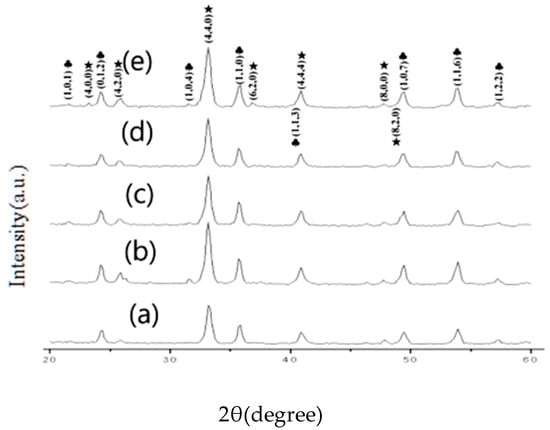
Figure 1
Open AccessArticle
Negative Temperature Coefficient Properties of Natural Clinoptilolite
by
Loredana Schiavo, Lucrezia Aversa, Roberto Verucchi, Rachele Castaldo, Gennaro Gentile and Gianfranco Carotenuto
Ceramics 2024, 7(2), 452-465; https://0-doi-org.brum.beds.ac.uk/10.3390/ceramics7020029 - 23 Mar 2024
Abstract
Negative temperature coefficient (NTC) materials are usually based on ceramic semiconductors, and electrons are involved in their transport mechanism. A new type of NTC material, adequate for alternating current (AC) applications, is represented by zeolites. Indeed, zeolites are single charge carrier ionic conductors
[...] Read more.
Negative temperature coefficient (NTC) materials are usually based on ceramic semiconductors, and electrons are involved in their transport mechanism. A new type of NTC material, adequate for alternating current (AC) applications, is represented by zeolites. Indeed, zeolites are single charge carrier ionic conductors with a temperature-dependent electrical conductivity. In particular, electrical transport in zeolites is due to the monovalent charge-balancing cations, like K+, capable of hopping between negatively charged sites in the aluminosilicate framework. Owing to the highly non-linear electrical behavior of the traditional electronic NTC materials, the possibility to have alternative types of materials, showing linearity in their electrical behavior, is very desirable. Among different zeolites, natural clinoptilolite has been selected for investigating NTC behavior since it is characterized by high zeolite content, a convenient Si/Al atomic ratio, good mechanical strength due to its compact microstructure, and low toxicity. Clinoptilolite has shown a rapid and quite reversible impedance change under heating, characterized by a linear dependence on temperature. X-ray diffraction (XRD) has been used to identify the natural zeolite, to establish all types of crystalline phases present in the mineral, and to investigate the thermal stability of these phases up to 150 °C. X-ray photoelectron spectroscopy (XPS) analysis was used for the chemical characterization of this natural clinoptilolite sample, providing important information on the cationic content and framework composition. In addition, since electrical transport takes place in the zeolite free-volume, a Brunauer–Emmett–Teller (BET) analysis of the mineral has also been performed.
Full article
(This article belongs to the Special Issue Advances in Ceramics, 2nd Edition)
►▼
Show Figures
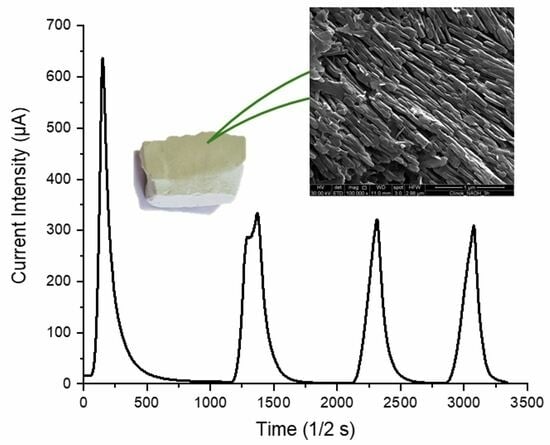
Graphical abstract
Open AccessArticle
Polymer-Infiltrated Ceramic Network Produced by Direct Ink Writing: The Effects of Manufacturing Design on Mechanical Properties
by
Junhui Zhang, Paula Pou, Ludmila Hodásová, Mona Yarahmadi, Sergio Elizalde, Jose-Maria Cabrera, Luis Llanes, Elaine Armelin and Gemma Fargas
Ceramics 2024, 7(2), 436-451; https://0-doi-org.brum.beds.ac.uk/10.3390/ceramics7020028 - 22 Mar 2024
Abstract
Polymer-infiltrated ceramic network (PICN) materials have gained considerable attention as tooth-restorative materials due to their mechanical compatibility with human teeth, especially with computer-aided design and computer-aided manufacturing (CAD/CAM) technologies. However, the designed geometry affects the mechanical properties of PICN materials. This study aims
[...] Read more.
Polymer-infiltrated ceramic network (PICN) materials have gained considerable attention as tooth-restorative materials due to their mechanical compatibility with human teeth, especially with computer-aided design and computer-aided manufacturing (CAD/CAM) technologies. However, the designed geometry affects the mechanical properties of PICN materials. This study aims to study the relationship between manufacturing geometry and mechanical properties. In doing so, zirconia-based PICN materials with different geometries were fabricated using a direct ink-writing process, followed by copolymer infiltration. Comprehensive analyses of the microstructure and structural properties of zirconia scaffolds, as well as PICN materials, were performed. The mechanical properties were assessed through compression testing and digital image correlation analysis. The results revealed that the compression strength of PICN pieces was significantly higher than the respective zirconia scaffolds without polymer infiltration. In addition, two geometries (C-grid 0 and C-grid 45) have the highest mechanical performance.
Full article
(This article belongs to the Special Issue Advances in Ceramics, 2nd Edition)
►▼
Show Figures
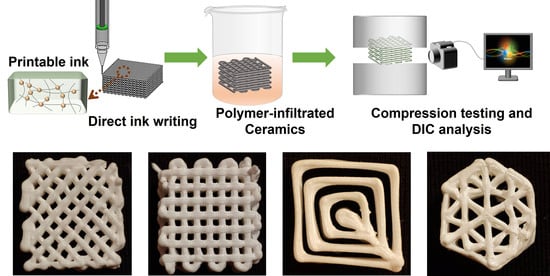
Graphical abstract
Open AccessArticle
Effects of Replacing Co2+ with Zn2+ on the Dielectric Properties of Ba [Zn1/3(Nb1/2Ta1/2)2/3]O3 Ceramics with High Dielectric Constant and High Quality Factor
by
Yuan-Bin Chen, Yu Fan, Shiuan-Ho Chang and Shaobing Shen
Ceramics 2024, 7(1), 426-435; https://0-doi-org.brum.beds.ac.uk/10.3390/ceramics7010027 - 17 Mar 2024
Abstract
In this study, we used solid-state synthesis to prepare Ba[(ZnxCo1−x)1/3(Nb0.5Ta0.5)2/3]O3 microwave ceramics for mobile communications. Compared with Ba[Zn1/3(Nb0.5Ta0.5)2/3]O3, in the
[...] Read more.
In this study, we used solid-state synthesis to prepare Ba[(ZnxCo1−x)1/3(Nb0.5Ta0.5)2/3]O3 microwave ceramics for mobile communications. Compared with Ba[Zn1/3(Nb0.5Ta0.5)2/3]O3, in the prepared materials, Co2+ substitution with Zn2+ improved the Q × f value and enabled densification and sintering at a lower temperature. We used X-ray diffraction (XRD) and scanning electron microscopy (SEM) to analyze the obtained microstructure. Ba[(ZnxCo1−x)1/3(Nb0.5Ta0.5)2/3]O3 was found to have a 1:2 ordered hexagonal structure, and its Q × f value increased with the increase in sintering temperature. In this work, excellent microwave dielectric properties—τf = −0.7 ppm/°C, εr = 34.5, and Q × f = 110,000 GHz—were obtained by sintering Ba[(Zn0.3Co0.7)1/3(Nb0.5Ta0.5)2/3]O3 at 1400 °C for 5 h.
Full article
(This article belongs to the Special Issue Advances in Electronic Ceramics)
►▼
Show Figures
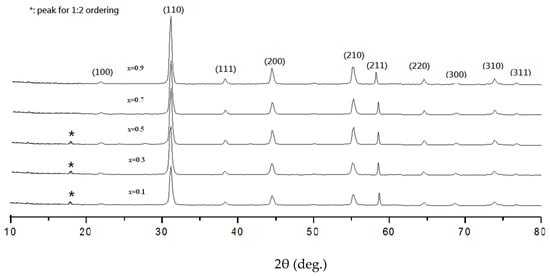
Figure 1
Open AccessArticle
Structural and Dielectric Properties of Titania Co-Doped with Yttrium and Niobium: Experimental Evidence and DFT Study
by
Deborah Y. B. Silva, Reginaldo Muccillo and Eliana N. S. Muccillo
Ceramics 2024, 7(1), 411-425; https://0-doi-org.brum.beds.ac.uk/10.3390/ceramics7010026 - 17 Mar 2024
Abstract
This work explores the impact of the sintering temperature and co-dopant contents on the microstructure and dielectric properties of (Y0.5Nb0.5)xTi1−xO2 (0.025 ≤ x ≤ 0.10) ceramics synthesized by the solid state reaction method. The
[...] Read more.
This work explores the impact of the sintering temperature and co-dopant contents on the microstructure and dielectric properties of (Y0.5Nb0.5)xTi1−xO2 (0.025 ≤ x ≤ 0.10) ceramics synthesized by the solid state reaction method. The physical mechanism underlying the colossal electric permittivity was systematically investigated with experimental methods and first principles calculations. All specimens exhibited the characteristic tetragonal structure of rutile, besides secondary phases. A niobium- and yttrium-rich secondary phase emerged at the grain boundaries after heating at 1500 °C, changing the main sintering mechanism. The highest value of the electric permittivity (13499 @ 60 °C and 10 kHz) was obtained for (Y0.5Nb0.5)0.05Ti0.95O2 sintered at 1480 °C, and the lowest dissipation factor (0.21@ 60 °C and 10 kHz) for (Y0.5Nb0.5)0.1Ti0.90O2 sintered at 1500 °C. The dielectric properties of Y3+ and Nb5+ co-doped TiO2 are attributed to the internal barrier layer capacitance (IBLC) and electron-pinned dipole defect (EPDD) mechanisms.
Full article
(This article belongs to the Special Issue Advances in Ceramics, 2nd Edition)
►▼
Show Figures
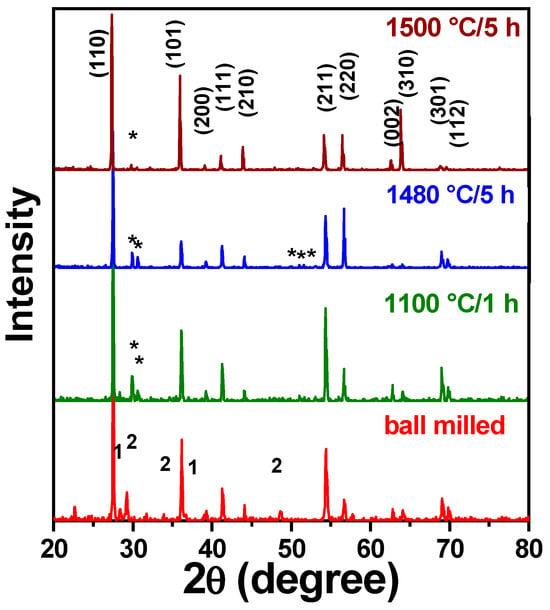
Figure 1
Open AccessArticle
Beyond Scanning Electron Microscopy: Comprehensive Pore Analysis in Transparent Ceramics Using Optical Microscopy
by
Francesco Picelli, Jan Hostaša, Andreana Piancastelli, Valentina Biasini, Cesare Melandri and Laura Esposito
Ceramics 2024, 7(1), 401-410; https://0-doi-org.brum.beds.ac.uk/10.3390/ceramics7010025 - 15 Mar 2024
Abstract
Developing an effective method of quantifying defects in the bulk of transparent ceramics is a challenging task that could facilitate their widespread use as a substitute for single crystals. Conventionally, SEM analysis is used to examine the microstructure but it is limited to
[...] Read more.
Developing an effective method of quantifying defects in the bulk of transparent ceramics is a challenging task that could facilitate their widespread use as a substitute for single crystals. Conventionally, SEM analysis is used to examine the microstructure but it is limited to the material surface. On the other hand, optical transmittance assesses material quality, but does not provide information on the size and concentration of defects. In this study, we illustrate the use of a digital optical microscope for the non-destructive, precise, and rapid analysis of residual porosity in transparent ceramics. YAG-based ceramics doped with Yb have been selected for this study because they are used as laser gain media, an application that requires virtually defect-free components. Different production processes were used to produce YAG samples, and the digital optical microscope analysis was used to compare them. This analysis was shown to be effective and precise to measure the size and concentration of the residual pores. In addition, the comparison of samples obtained with different production processes showed that the size and distribution of the residual porosity is affected by the drying step of the powders before shaping by pressing, as well as by the sintering aids used to ease the densification. It also showed that the transmittance is influenced by both the total volume and the concentration of the pores.
Full article
(This article belongs to the Special Issue Transparent Ceramics—a Theme Issue in Honor of Dr. Adrian Goldstein)
►▼
Show Figures
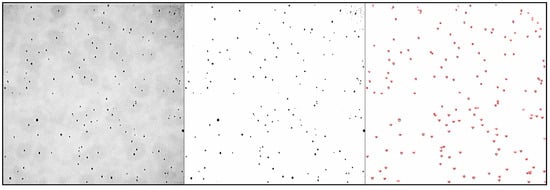
Figure 1
Open AccessArticle
Hydrogen Permeation Properties of Ternary Ni–BaCe0.9Y0.1O3–Ce0.9Gd0.1O2 Cermet Membranes
by
Yoshiteru Itagaki, Hiroyuki Mori, Takumi Matsubayashi and Hiromichi Aono
Ceramics 2024, 7(1), 385-400; https://0-doi-org.brum.beds.ac.uk/10.3390/ceramics7010024 - 13 Mar 2024
Abstract
A ternary Ni–BaCe0.9Y0.1O3 (BCY)–Ce0.9Gd0.1O2 (GDC) cermet involving 40 vol% Ni was fabricated, and its hydrogen permeation characteristics were evaluated when the GDC volume fraction was varied from 0 to 30 vol%. The X-ray
[...] Read more.
A ternary Ni–BaCe0.9Y0.1O3 (BCY)–Ce0.9Gd0.1O2 (GDC) cermet involving 40 vol% Ni was fabricated, and its hydrogen permeation characteristics were evaluated when the GDC volume fraction was varied from 0 to 30 vol%. The X-ray diffraction results of the cermet after sintering at 1400 °C revealed that GDC was dissolved in BCY when the GDC volume composition was 20 vol%. Regardless of the BCY and GDC volume fractions, the metal conductivity of the cermet was dominated by Ni. After the addition of only 1 vol% GDC, the particle sizes of Ni and BCY in the cermet significantly decreased, and the particle size decreased as the volume fraction of GDC increased. The hydrogen permeability increased with increasing temperature and for up to 10 vol% GDC, and a maximum permeation rate of 0.142 mL min−1 cm−2 was obtained at 700 °C. This value is comparable to or better than previously reported values for Ni-cermets under the same conditions. The amount of hydrogen permeation decreased above 10 vol% GDC. This study demonstrated that Ni-BCY-GDC cermet is a material that has both high hydrogen permeability and CO2 resistance.
Full article
(This article belongs to the Special Issue Advances in Ceramics, 2nd Edition)
►▼
Show Figures
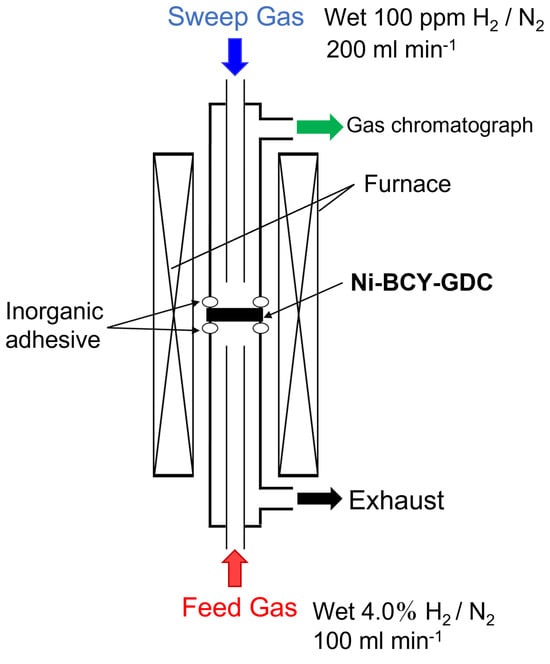
Figure 1
Open AccessArticle
Holistic Characterization of MgO-Al2O3, MgO-CaZrO3, and Y2O3-ZrO2 Ceramic Composites for Aerospace Propulsion Systems
by
Kateryna O. Shvydyuk, João Nunes-Pereira, Frederico F. Rodrigues, José C. Páscoa, Senentxu Lanceros-Mendez and Abílio P. Silva
Ceramics 2024, 7(1), 364-384; https://0-doi-org.brum.beds.ac.uk/10.3390/ceramics7010023 - 02 Mar 2024
Abstract
Aerospace propulsion systems are among the driving forces for the development of advanced ceramics with increased performance efficiency in severe operation conditions. The conducted research focused on the mechanical (Young’s and shear moduli, flexural strength, hardness, and fracture toughness), thermal (thermal conductivity and
[...] Read more.
Aerospace propulsion systems are among the driving forces for the development of advanced ceramics with increased performance efficiency in severe operation conditions. The conducted research focused on the mechanical (Young’s and shear moduli, flexural strength, hardness, and fracture toughness), thermal (thermal conductivity and coefficient of thermal expansion), and electric (dielectric properties) characterization of MgO-Al2O3, MgO-CaZrO3, and stable YSZ ceramic composites. The experimental results, considering structural and functional traits, underscore the importance of a holistic understanding of the multifunctionality of advanced ceramics to fulfill propulsion system requirements, the limits of which have not yet been fully explored.
Full article
(This article belongs to the Special Issue Advances in Ceramics, 2nd Edition)
►▼
Show Figures

Figure 1
Open AccessArticle
Franklinite-Zincochromite-Gahnite Solid Solutions for Cool Red Ceramic Pigments with Visible Light Photocatalysis
by
Guillermo Monrós, José A. Badenes, Mario Llusar and Carolina Delgado
Ceramics 2024, 7(1), 342-363; https://0-doi-org.brum.beds.ac.uk/10.3390/ceramics7010022 - 01 Mar 2024
Abstract
Franklinite-zincochromite-gahnite solid solutions were prepared using ceramic or coprecipitation methods, and their pigmenting capacity as cool ceramic pigments in different glazes (double and single firing frits and porcelain frit) was studied. XRD, UV–Vis–NIR diffuse reflectance, CIEL*a*b* colour analysis, band gap measurements, and the
[...] Read more.
Franklinite-zincochromite-gahnite solid solutions were prepared using ceramic or coprecipitation methods, and their pigmenting capacity as cool ceramic pigments in different glazes (double and single firing frits and porcelain frit) was studied. XRD, UV–Vis–NIR diffuse reflectance, CIEL*a*b* colour analysis, band gap measurements, and the photocatalytic degradation of Orange II were carried out to characterise the samples. The following criteria for high red colouring capacity and high NIR reflectance at the minimum Cr amount were found to be the optimal compositions for an intense reddish cool pigment: Zn(Fe1.8Cr0.2), Zn(Al1.5Cr0.5) and Zn(Al1.3Cr0.5Fe0.2)O4. All the powders showed a direct semiconductor behaviour, with a band gap of approximately 2 eV, which fell in the visible range (620 nm); the visible light photocatalysis of Orange II was moderate, but franklinite-zincochromite Zn(Fe1.8Cr0.2) stood out compared with silver orthophosphate.
Full article
(This article belongs to the Special Issue Advances in Ceramics, 2nd Edition)
►▼
Show Figures
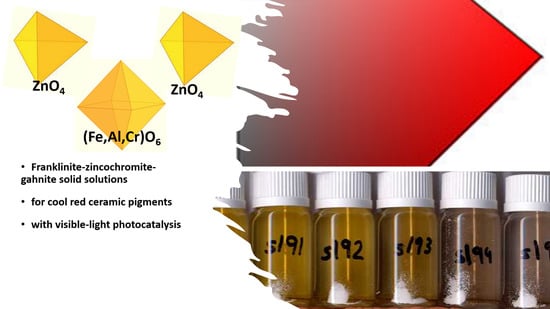
Graphical abstract
Open AccessArticle
Analysis of the Luminescent Emission during Flash Sintering of 8YSZ and 20SDC Ceramics
by
Reginaldo Muccillo, Julio Cesar C. A. Diaz and Eliana N. S. Muccillo
Ceramics 2024, 7(1), 329-341; https://0-doi-org.brum.beds.ac.uk/10.3390/ceramics7010021 - 25 Feb 2024
Abstract
Light-emission data were collected before, during, and after the occurrence of the flash event in pressureless electric-field-assisted (flash) sintering experiments on ZrO2: 8 mol% Y2O3 (8YSZ) and CeO2: 20 mol% Sm2O3 (20SDC) ceramic
[...] Read more.
Light-emission data were collected before, during, and after the occurrence of the flash event in pressureless electric-field-assisted (flash) sintering experiments on ZrO2: 8 mol% Y2O3 (8YSZ) and CeO2: 20 mol% Sm2O3 (20SDC) ceramic green pellets to analyze the luminescent emission from the samples. The experiments were performed at 800 °C with an applied electric field of 100 V·cm−1 at 1 kHz, limiting the electric current to 1 A. Luminescence data were obtained in the 200–1200 nm (ultraviolet–visible–near-infrared) range. The deconvolution of the optical spectra allowed for the identification of emission bands in the visible range due exclusively to the samples. The wavelength maxima of the emission bands in 8YSZ were found to be different from those in 20SDC. It is suggested that these bands might originate from the interaction of the electric current, resulting from the application of the electric field, with the depleted species located at the space-charge region at the grain boundaries of these ceramics. The main results represent a contribution to help to clarify the mechanisms responsible for the fast densification with inhibition of grain growth in electroceramics.
Full article
(This article belongs to the Special Issue Advances in Ceramics, 2nd Edition)
►▼
Show Figures
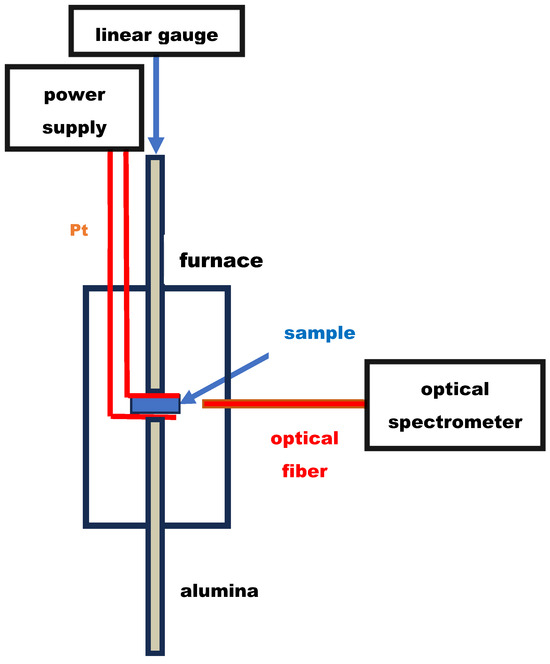
Figure 1
Open AccessReview
High-Performance Ceramics in Musculoskeletal Surgery: Current Use and Future Perspectives
by
Jörg Eschweiler, Johannes Greven, Björn Rath, Philipp Kobbe, Ali Modabber, Frank Hildebrand, Filippo Migliorini and Ulf Krister Hofmann
Ceramics 2024, 7(1), 310-328; https://0-doi-org.brum.beds.ac.uk/10.3390/ceramics7010020 - 23 Feb 2024
Abstract
►▼
Show Figures
Osteoarthritis (OA) is a prevalent disease among the elderly population, necessitating effective treatment options. Total joint arthroplasty (TJA) is a reliable surgical procedure that has shown good long-term clinical outcomes for OA. However, certain challenges, such as implant failure caused by particle-induced aseptic
[...] Read more.
Osteoarthritis (OA) is a prevalent disease among the elderly population, necessitating effective treatment options. Total joint arthroplasty (TJA) is a reliable surgical procedure that has shown good long-term clinical outcomes for OA. However, certain challenges, such as implant failure caused by particle-induced aseptic loosening or hypersensitivity to metal ions, remain unresolved in TJA. High-performance ceramic implants have emerged as a promising solution to address these persistent implant-related issues. This review article provides an overview of the composition and characteristics of ceramics used in TJA, highlighting their potential advantages and associated risks. While ceramic implants have demonstrated excellent performance in vivo for hip and knee arthroplasty, their bioinert behaviour is still considered a crucial factor regarding cementless options. Therefore, novel methods are investigated that seem to be able to combine the benefits of ceramic materials with an excellent osseointegration behaviour, which makes ceramics as implant materials an even stronger option for future applications.
Full article
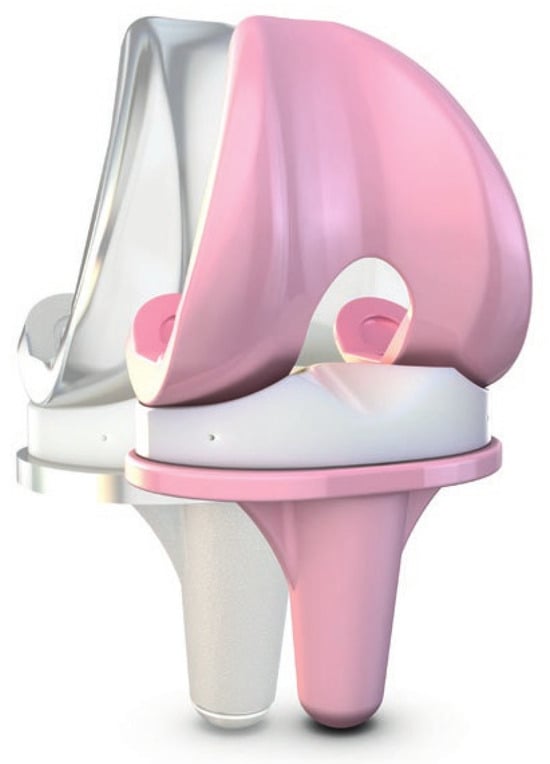
Figure 1
Open AccessReview
Sustainable Approaches for the Additive Manufacturing of Ceramic Materials
by
Alice Villa, Pardeep Kumar Gianchandani and Francesco Baino
Ceramics 2024, 7(1), 291-309; https://0-doi-org.brum.beds.ac.uk/10.3390/ceramics7010019 - 23 Feb 2024
Abstract
Additive manufacturing technologies collectively refer to a set of layer-wise deposition methods that typically rely on CAD-CAM approaches for obtaining products with a complex shape/geometry and high precision and reliability. If the additive manufacturing of polymers is relatively easy and scalable due to
[...] Read more.
Additive manufacturing technologies collectively refer to a set of layer-wise deposition methods that typically rely on CAD-CAM approaches for obtaining products with a complex shape/geometry and high precision and reliability. If the additive manufacturing of polymers is relatively easy and scalable due to the low temperatures needed to obtain processable inks, using similar technologies to fabricate ceramic products is indeed more challenging and expensive but, on the other hand, allows for obtaining high-quality results that would not be achievable through conventional methods. Furthermore, the implementation of additive manufacturing allows for the addressing of some important concerns related to the environment and sustainability, including the minimization of resource depletion and waste production/disposal. Specifically, additive manufacturing technologies can provide improvements in energy consumption and production costs, besides obtaining less waste material and less CO2 emissions, which are all key points in the context of the circular economy. After providing an overview of the additive manufacturing methods which are specifically applied to ceramics, this review presents the sustainability elements of these processing strategies, with a focus on both current and future benefits. The paucity of specific available studies in the literature—which are included and discussed in this review—suggests that the research on additive manufacturing sustainability in the field of ceramic materials is in the preliminary stage and that more relevant work still deserves to be carried out in the future to explore this fascinating field at the boundary among ceramics science/technology, production engineering and waste management.
Full article
(This article belongs to the Special Issue Advances in Ceramics, 2nd Edition)
►▼
Show Figures
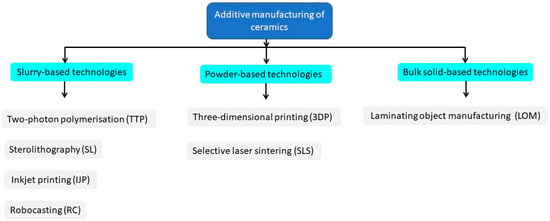
Figure 1
Open AccessArticle
LiGdxY1−xF4 and LiGdF4:Eu3+ Microparticles as Potential Materials for Optical Temperature Sensing
by
Ekaterina I. Oleynikova, Oleg A. Morozov, Stella L. Korableva and Maksim S. Pudovkin
Ceramics 2024, 7(1), 276-290; https://0-doi-org.brum.beds.ac.uk/10.3390/ceramics7010018 - 23 Feb 2024
Abstract
►▼
Show Figures
In this work, the physical characterization of LiGdxY1−xF4 (x = 0.05, 0.3, 0.7, and 1.0) and LiGdF4:Eu3+ microparticles was performed. The distribution coefficient of LiGdxY1−xF4 (x = 0.05) was determined
[...] Read more.
In this work, the physical characterization of LiGdxY1−xF4 (x = 0.05, 0.3, 0.7, and 1.0) and LiGdF4:Eu3+ microparticles was performed. The distribution coefficient of LiGdxY1−xF4 (x = 0.05) was determined for the first time (0.84). Based on kinetic characterization data, the LiGdF4 sample was chosen for further Eu3+ doping (0.1 and 1.0 at.%). For the LiGdF4:Eu3+ sample, Eu3+ emission was clearly observed under the excitation of Gd3+. This fact indicates an effective energy transfer from Gd3+ to Eu3+. The temperature-dependent spectral characterization of the LiGdF4:Eu3+ (1.0%) sample revealed that in the 30–250 K temperature range, a broad emission peak is evidenced. Its intensity sharply increases with the temperature decrease. We made a suggestion that this phenomenon is related to the irradiation-induced defects. The integrated luminescence intensity ratio of this broad peak and the Eu3+ emission were taken as temperature-dependent parameters. The sensitivity values are very competitive, and the first maximum occurs at 174 K (3.18%/K). The kinetic characteristics of both Gd3+ and Eu3+ did not demonstrate a notable temperature dependence. The LiGdF4:Eu3+ sample showed the possibility of being used as an optical temperature sensor, operating in the cryogenic temperature range.
Full article
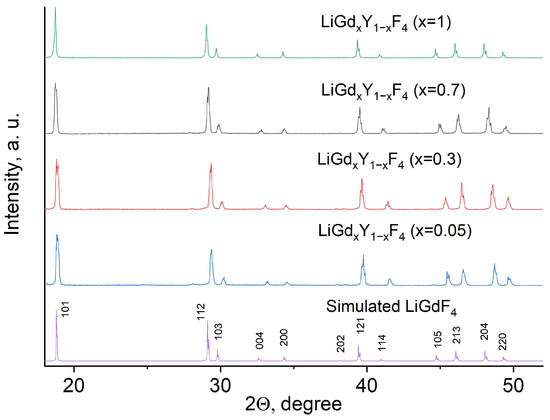
Figure 1
Highly Accessed Articles
Latest Books
E-Mail Alert
News
Topics
Topic in
Ceramics, Construction Materials, Geotechnics, Materials, Minerals
Geopolymers: Synthesis, Characterization and Applications II
Topic Editors: Thomas N. Kerestedjian, Alexander KaramanovDeadline: 30 April 2024

Conferences
Special Issues
Special Issue in
Ceramics
Innovative Manufacturing Processes of Silicate Materials
Guest Editors: Maurice Gonon, Sandra Abdelouhab, Gisèle Lecomte-NanaDeadline: 31 May 2024
Special Issue in
Ceramics
Research Progress in Ceramic Coatings
Guest Editors: Kamalan Kirubaharan Amirtharaj Mosas, Doni DanielDeadline: 21 June 2024
Special Issue in
Ceramics
Transparent Ceramics—a Theme Issue in Honor of Dr. Adrian Goldstein
Guest Editor: Yiquan WuDeadline: 30 June 2024
Special Issue in
Ceramics
New Horizons in Ceramic Processing and Manufacturing: Celebrating the Institute for Manufacturing Technologies of Ceramic Components and Composites of the University of Stuttgart
Guest Editor: Frank KernDeadline: 31 August 2024



